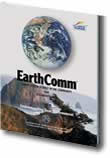Below are storylines that were designed by Cheryl Mosier, an Earth Science Teacher at Columbine High School in Littleton, Colorado.
Big Idea:
- Earth’s dynamic equilibrium system contains subsystems from atoms to planetary spheres. Materials interact among these subsystems due to natural forces and energy that flows from sources inside and outside of the planet. These interactions, changes, forces and flows tend to occur in offsetting directions and amounts. Materials tend to flow in chains, cycles and webs that tend toward equilibrium states in which energy is distributed as uniformly as possible. The net result is a state of balanced change or dynamic equilibrium, a condition that appears to have existed for billions of years.
- Change through time produced Earth, the net result of constancy, gradual changes, and episodic changes over human, geological, and astronomical scales of times and space.
- Dynamic environments and ecosystems are produced by the interaction of all the geospheres at the Earth’s surface, and include many different environments, ecosystems, and communities that affect one another and change through time.
- In order to sustain the presence and quality of human life, humans and communities must understand their dependency on Earth resources and environments, realize how they influence Earth systems, appreciate Earth’s carrying capacity, manage and conserve nonrenewable resources and environments, develop alternate sources of energy and materials needed for human sustenance, and invent new technologies.
|
|
Activity 1 – Your Community’s Water Resources |
Activity 2 – Urban Development and Air Quality |
Activity 3 – Flooding |
Activity 4 – Slope of Land |
Activity 5 – Soil and Land Use |
Activity 6 – Surveying the Community of Land Use |
|
Key Evidence Learned |
- local drainage basins - water sources in our community - importance of protecting water - location of watersheds and drainage divides for land use planning |
- urban heat island effect - factors that cause heat island - how to minimize heat island |
- areas that would be flooded - importance of floodplains in land use planning |
- angle of repose for different materials - slopes in our area |
- local soils and classification of them - how soils form, soil profiles - soil changes over time |
- use a process to build consensus - appreciation for different points of view - land features and natural resources play an important role in land use planning |
|
Connection to: |
||||||
|
Big Idea |
- location of watersheds and drainage divides are located - how humans impact these systems |
- how humans impact temperature locally |
- human impact of flooding |
- how slopes can cause change - impact of slope on ecosystems |
- how soils are used by humans as a natural resource |
- human impact on our resources |
|
Real Life and Chapter Challenge |
- where our water comes from in Colorado - why it’s important to protect our water resources - water treatment locations |
- why Denver’s temps are different now than before DIA was built - how to minimize heat islands |
- where floods can occur in the metro area and the mountains - how to minimize flooding - why Chatfield Reservoir was made |
- slopes in the area - why Green Mountain was a bad building choice
|
- soils in our area - how soils can be changed over short and long periods of time |
- how humans feel about certain issues and how to reach consensus |
|
Geosphere |
- how the land is naturally divided |
- surface materials and their impact on temperatures |
- impact of flooding on surface materials |
- mass wasting processes |
- how soils form |
|
|
Hydrosphere |
- where water is located |
- how urban heat islands can affect surface water temps |
- how flooding can change the path of streams |
- how mass wasting can change water flow patterns |
- impact water has on soil formation |
|
|
Atmosphere |
|
- how different materials create the urban heat island effect |
|
|
- how wind and air can impact soil formation |
|
|
Cryosphere |
|
- how local changes in temp can affect glaciers - how local changes in temp can affect ice on lakes |
|
|
|
|
|
Biosphere |
- ecosystems in watersheds and drainage divides |
- how urban heat island effects can impact ecosystems |
- flooding impacts on ecosystems |
- ecosystems in sloped areas and how they are different than flat areas |
- types of plants and animals that can live in different soils |
|

